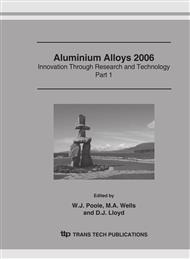[1]
J. Røyset and N. Ryum: Int. Mater. Rev. Vol. 50 (2005), pp.19-44.
Google Scholar
[2]
E.A. Marquis and D.N. Seidman: Acta Mater. Vol. 49 (2001), p.1909-(1919).
Google Scholar
[3]
S. Iwamura and Y. Miura: Acta Mater. Vol. 52 (2004), pp.591-600.
Google Scholar
[4]
C.B. Fuller, D.N. Seidman and D.C. Dunand: Scripta Mater. Vol 40 (1999), pp.691-696.
Google Scholar
[5]
D.N. Seidman, E.A. Marquis and D.C. Dunand: Acta Mater. Vol 50 (2002), pp.4021-4035.
Google Scholar
[6]
E.A. Marquis, D.N. Seidman and D.C. Dunand: Acta Mater. Vol. 51 (2003), pp.285-287.
Google Scholar
[7]
E.A. Marquis, D.N. Seidman and D.C. Dunand: Acta Mater. Vol. 51 (2003), pp.4751-4760.
Google Scholar
[8]
M.E. van Dalen, D.C. Dunand and D.N. Seidman: Acta Mater. Vol. 53 (2005), pp.4225-4235.
Google Scholar
[9]
C.B. Fuller, D.N. Seidman and D.C. Dunand: Acta Mater. Vol. 51 (2003), pp.4803-4814.
Google Scholar
[10]
Y. Harada and D.C. Dunand: Mat. Sci. Eng. A Vol. 329 (2002), pp.686-695.
Google Scholar
[11]
E.A. Marquis and D.C. Dunand: Scripta Mater. Vol. 47 (2002), pp.503-508.
Google Scholar
[12]
K.E. Knipling, D.C. Dunand and D.N. Seidman: Z. Metallkd. To appear (2006).
Google Scholar
[13]
O.I. Zalutska, V.R. Ryabov and I.I. Zalutsky: Dopov. Akad. Nauk. A (1969), pp.255-259.
Google Scholar
[14]
O.I. Zalutska, et al.: Dopov. Akad. Nauk. A (1970), pp.751-753.
Google Scholar
[15]
A. Palenzon: J. Less-Common Met. Vol. 29 (1972), pp.289-292.
Google Scholar
[16]
L.F. Mondolfo: Aluminum Alloys: Structure and Properties (Butterworths, London, 1976).
Google Scholar
[17]
S.I. Fujikawa: Defect Diffus. Forum Vol. 143 (1997), pp.115-120.
Google Scholar
[18]
R.R. Sawtell and J. J. W. Morris in: Kim and Griffith (eds), Dispersion Strengthened Aluminum Alloys (TMS, Warrendale, 1988), pp.409-420.
Google Scholar
[19]
R. Lagneborg and B. Bergman: Met. Sci. Vol. 10 (1976), pp.20-28.
Google Scholar
[20]
E. Arzt in: Ochiai (ed), Mechanical Properties of Metallic Composites (Marcel Dekker, New York, 1994), pp.205-223.
Google Scholar
[21]
J. R¨osler and E. Arzt: Acta Metall. Vol. 36 (1988), pp.1043-1051.
Google Scholar


